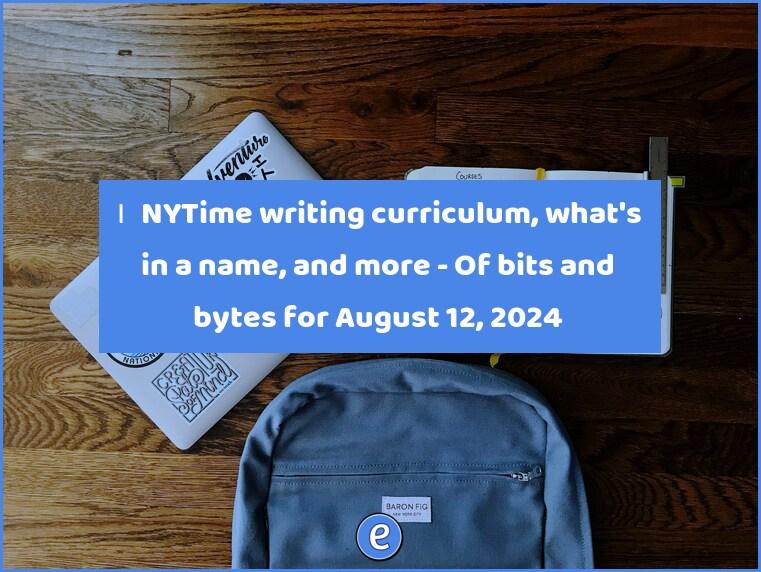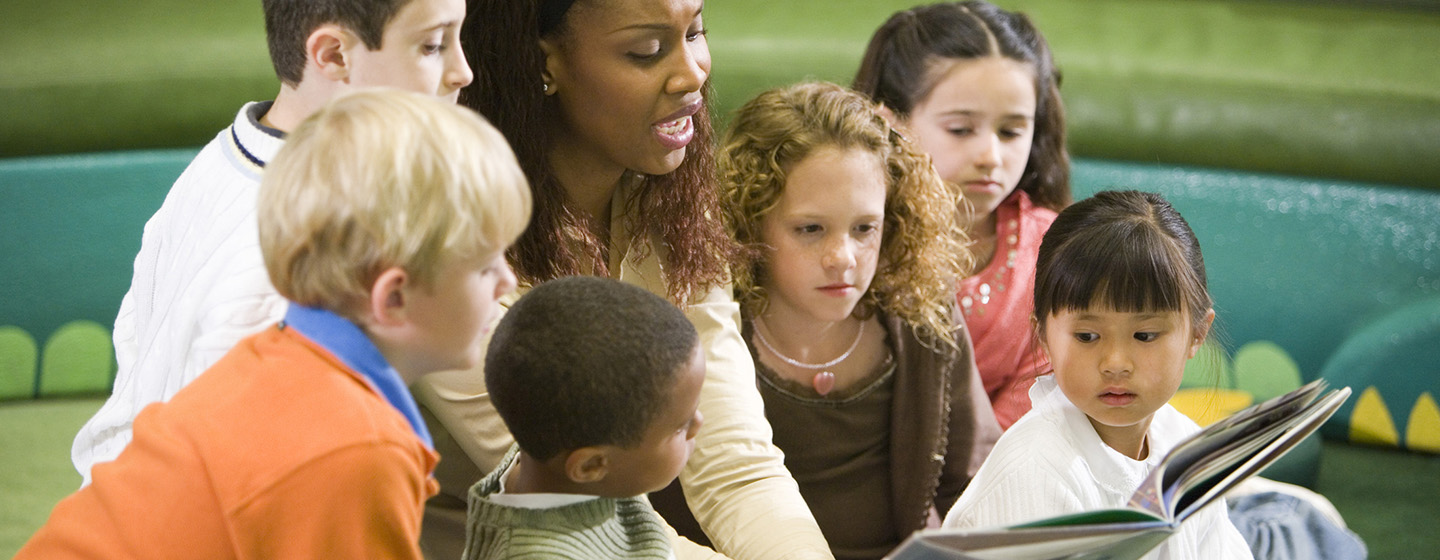🙋♂️ NY Times writing curriculum, what’s in a name, and more – Of bits and bytes for August 12, 2024
Internet Travels
Of bits and bytes is my weekly round up of interesting links and ideas I discovered on the internet. It is published on Mondays for the previous week
Back in June it seemed like a good idea to take a couple months off so I don’t get burned out, and August seemed so far away. However, August hits like it always does, everyone wants everything done yesterday and I’m just trying to survive until the first day of classes. But, that’s the nature of the beast, and as someone with ADHD, the time pressure can be exhilarating.
I’m still working at getting into some sort of schedule, summer has been good for me on unwinding, but with school starting back up I can’t stay up until 1 or 2am and sleep in until 10 anymore.
Learn21 is a proud sponsor of Eduk8me and the Of Bits and Bytes newsletter. Read more about their mission at Learn21.
Education
The New York Times a new writing curriculum for 2024-25 with nine juicy units centered around reviews, photo essays, podcasts, and more. Your students can creating real-world content, not only of text, but with photos, videos, and audio.
Ever had a boss who did such a rocking job they got booted for it? Meet Heath Grimes, the Alabama superintendent who turned around Russellville’s schools, especially for English learners. This is an unfortunate story of someone who looked at a situation and came up with a solution that worked for how the world is, not on how some wanted the world to be.
Technology
As the new school year kicks off, states like Indiana and Louisiana are implementing laws to curb student cellphone use during school hours (Archive. More than 70 percent of high school teachers consider student phone distractions a major issue, and states aim to reduce distractions and misuse, such as cyberbullying, by introducing uniform restrictions. Some schools now mandate students to place their phones in lockers or specialized pouches, although enforcement remains challenging. Despite general support for limited bans, some parents and students argue that absolute restrictions can hinder communication and responsibility management.
I’d love to hear from you if your school district is looking at cellphone limits. This is one of the few topics I don’t have strong feelings toward either side, so I’m really curious how the discussions are going.
What’s sad is the number of elementary students I see with AppleWatches that have cellular capabilities. If you’re curious, they are the AppleWatches that have a red ring around the crown. Devices like that could be a solution to the parental concerns about communication with their child, but the parent could also call the school like we did at the turn of the century.
Tips
With the new school year upon us, here are a few tips to help you start out!
Set up your classroom internet home
Where is the main digital location of your class? Is it a blog? Your learning management system? Once you decide, communicate that information to your class, so they always know where the information about the class will be posted for the upcoming school year. For my classrooms I create a home page for each class. One of the first tasks we do as a class is to bookmark this page which I will use throughout the year to post links that are pertinent to the class. It’s a pretty easy way to keep the students on track.
Select a method of group communications
Having some sort of electronic announcement procedure in place will cut down on mis-communications throughout the year. There are a few ways to do this, such as ParentSquare, Remind, or even a Google Group. Think about the different audiences for messages, the three main ones are your students, their parents or guardians, and the community at large. Pick the communication tool for each audience and use it consistently.
Create a daily check off list, steps that need to be done every day
I’ve found that a check list helps with a lot of things, and your daily routine is one of them. By listing the items you do every day, you can efficiently complete those tasks and reduce the cognitive load of remembering everything you need to do in a day.
Mine includes really mundane tasks such as checking my email, going through my todo list, and checking the calendar for any events that day or coming up. This could be done in a spreadsheet, Google Tasks, or any sort of task management software. My current favorite is TickTick.
Also, include a checklist for students. What are they expected to do throughout the day? The less ambiguity on what’s next the better.
Pop Culture
The article “The Crybaby Olympics” discusses the increasing trend of poor sportsmanship among athletes, particularly at the recent Olympics.. Historically, athletes like Akio Kaminaga once exemplified grace in defeat, but recent events in judo and other sports showcase athletes refusing to shake hands, throwing tantrums, and even physically attacking opponents. Hopefully, the actions of Jordan Chiles and Simone Biles during the medal ceremony for the gymnastics woman’s floor will become more of the norm and not the exception.
Potpourri
If you’ve followed my regular Instagram or TikTok accounts, you might have seen some posts on the Ryan Meetups I’ve attended. This is a complete reversal of how I felt about my name growing up. It wasn’t a popular name, and whenever I would see those little licence plate trinkets with names on them, they would never have Ryan. In fact, there usually wasn’t even a spot for Ryan!
Why am I talking about names? Two articles came across my news reader this week, the first is pretty standard fare for teachers, but the second was very intersting.
A recent BuzzFeed article shares some of the most bizarre and cringe-worthy baby names people have encountered, sparking debates about parents’ choices.. From names like Bo-peep, Summer Eve, and Marriott to more jaw-dropping ones such as S@#$ (my edit, need to keep this family friendly) Head (pronounced Sh-thed), Vagina, and FEMALe (pronounced Femahly), the list highlights how creative or oblivious some parents can be. Let me know if you’ve had any “interessting” names!
Too make matters worse for these poor kids, a study has shown that faces evolve to match names over time. A fascinating new study has revealed that a person’s face tends to evolve to match their name through the influence of social expectations. Adults’ faces could be matched to their names with impressive accuracy, whereas children’s faces showed no such correlation. Using both human participants and machine learning, researchers found significant similarities among adults sharing the same name, a phenomenon known as a self-fulfilling prophecy. This underlines the powerful role that social constructs play in shaping not just our behaviors, but even our physical appearances over time.
Thank you!
Major props if you’ve made it this far, you are a rockstar! Feel free to contact me with questions, ideas, concerns, or my thoughts on the next Marvel movie. In fact, I love to discuss about any topic and then wonder how it intersects with education.
“Yesterday is history, Tomorrow is a mystery, but Today is a gift. That is why it is called the present.” – OOgway, Kung Fu Panda

By design, the vast majority of Of Bits and Bytes readers never pay anything for the links, commentary, and tips it provides. But you made it all the way to the end of this week’s edition — maybe not for the first time. Want to support more journalism like what you read today? If so, click here.
Be sure to subscribe to my YouTube channel and join your fellow educators on the Eduk8me email list!






